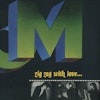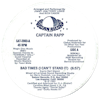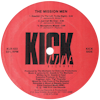The announcer begins, “Ladies and gentlemen, welcome to Westlake Inn, located in Westlake, California. This evening, Cocktail Productions is recording live a talented musician, arranger, and composer from South America...Ozzie Dasilva!” Zig Zag With Love...Live follows Brazilian musician Dasilva as he tours a variety of Los Angeles’s bars, recording songs at each venue. As far as lounge albums go, it’s a cute gimmick, especially as announcer Richard Parker introduces Dasilva at each venue, including Howard Manor in Palm Springs and Trader Nick’s in Pismo Beach.
Cocktail Productions must have been quite taken with Dasilva to have lugged recording equipment to each venue, and they wouldn’t have been the first company to fake a “live” album by editing in audience noise. The music itself is real enough though—a diverse blend of Brazilian styles includes requisite bossa nova and samba tracks, but the real standout is the title track. It opens innocuously with the kind of playful bossa-vamping you’d expect from a ’70s lounge album, but then it gives way into a straight-up funk rhythm built on Jose Zelao’s punchy bass line and Bob Zimmitti’s driving percussion. With that beat behind him, Dasilva begins rapping.
Of course, this was before rapping actually had a name, but Dasilva’s curt cadence and use of rhyme, combined with that heavy backbeat, bear more than a passing resemblance to what hip-hop would sound like a decade later. A working knowledge of Portuguese would be useful to decipher his lyrical skills, but as far as flow goes, Dasilva handles himself nicely, sounding less like an awkward Sugarhill Gang and more like a veteran Spoonie Gee. (It’s also worth noting: the word “BOOM” is written out over the gatefold cover too). It’s hard to know what folks at the time would have thought of what Dasilva was doing, but listening to it now feels like a giddy, zigzagging trip into music’s future and past, simultaneously.


